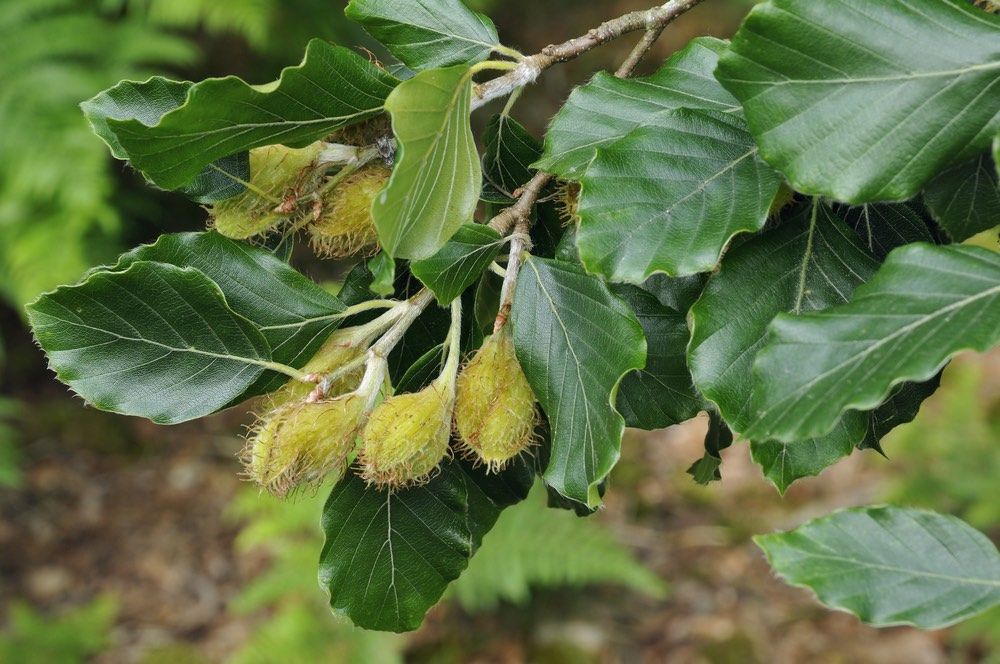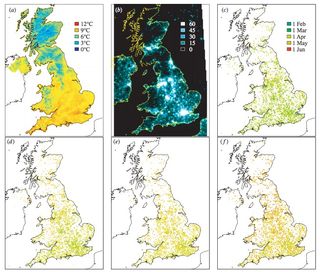Light Pollution Is Waking Trees Up Early for Spring

The bright lights of the big city may trick trees into budding up to a week early, new research finds.
Light pollution in the United Kingdom was linked to early "budburst," or the date that green leaves just begin to emerge from a budding tree. Later-budding trees such as the European ash (Fraxinus excelsior) were most affected by light pollution, researchers report today (June 28) in the journal Proceedings of the Royal Society B.
"It was an amazing result, really," study researcher Richard ffrench-Constant, an etymologist at the University of Exeter, told Live Science. [Photos: See Light Pollution Around the World]
Domino effect
Ffrench-Constant came to be interested in trees by way of insects. He studies the winter moth caterpillar (Operophtera brumata), which relies on early spring leaves for sustenance. (More mature leaves produce bitter tannin compounds to ward off caterpillars and other herbivores.) Thus, the timing of budburst is crucial for winter moths.
"The moths are continuously struggling to time the hatch of the eggs exactly at the time that buds on the tree burst, and then the caterpillars will have the juiciest, freshest, greenest leaves," ffrench-Constant said. The caterpillars' success or failure reverberates up the food chain, he added: Bird species time the hatching of their eggs to the caterpillar hatch so that their offspring will have ample food.
"There's a lot riding on the hatch of these caterpillars in the forest ecosystem," ffrench-Constant said.
Trees use temperature cues to determine when to burst into bud, but experimental work has also shown that many rely on light cues, too. In particular, pigments in the trees respond to red light with growth and far-red light with inactivity. Red light wavelengths are prevalent in sunlight, while far-red light wavelengths are more dominant in shade or nearly dark locations.
Sign up for the Live Science daily newsletter now
Get the world’s most fascinating discoveries delivered straight to your inbox.
Citizen science
Light pollution is already known to directly alter behavior in animals like bats and sea turtles. Ffrench-Constant and his colleagues wondered if streetlights and other city illumination might affect trees, too. They used citizen observations from the U.K. phenology network of nearly 42,000 individual trees of four species: the European sycamore (Acer pseudoplatanus), the European beech (Fagus sylvatica), the pedunculate oak (Quercus robur) and the European ash (F. excelsior).

The researchers then used satellite data to measure light intensity at night at the location of each tree, and meteorological data to measure air temperature. They found that the earliest-budding species, the European sycamore, wasn't affected by light pollution. But even after controlling for the effects of temperature, the researchers found that as the light became brighter, the other three species budded earlier.
At an average spring temperature of 39.2 degrees Fahrenheit (4 degrees Celsius), the European ash budded seven days earlier in the most light-polluted locations than they did in the darkest areas. Even when the biggest urban areas were removed from the analysis — to help prevent urban heat-trapping effects from tarnishing the data — the ash still budded five days earlier in brighter locations. The European beech and pedunculate oak followed similar patterns, budding days earlier in brighter areas.
"These differences are too large to explain by differences in temperature alone," Ffrench-Constant said.
Global light pollution has been increasing by about 6 percent a year since 1947, according to a 2003 analysis in the Monthly Notices of the Royal Astronomical Society. A report this month in the journal Science Advances found that the night sky is so artificially bright in inhabited locations that one-third of the people living there can't see the Milky Way from their homes. In North America, that number rises to 80 percent.
Ffrench-Constant and his colleagues are the first to show that this gradually increasing brightness may be affecting plants. It's a problem that is likely exacerbated by rising global temperatures, ffrench-Constant noted.
"Even though we've gone through a ridiculous amount of trouble to control for the effect of heat in our study, obviously, the combination of climate change and artificial lighting is a double whammy," he said. "Both of these are going to push spring in a forward direction."
Original article on Live Science.

Stephanie Pappas is a contributing writer for Live Science, covering topics ranging from geoscience to archaeology to the human brain and behavior. She was previously a senior writer for Live Science but is now a freelancer based in Denver, Colorado, and regularly contributes to Scientific American and The Monitor, the monthly magazine of the American Psychological Association. Stephanie received a bachelor's degree in psychology from the University of South Carolina and a graduate certificate in science communication from the University of California, Santa Cruz.










